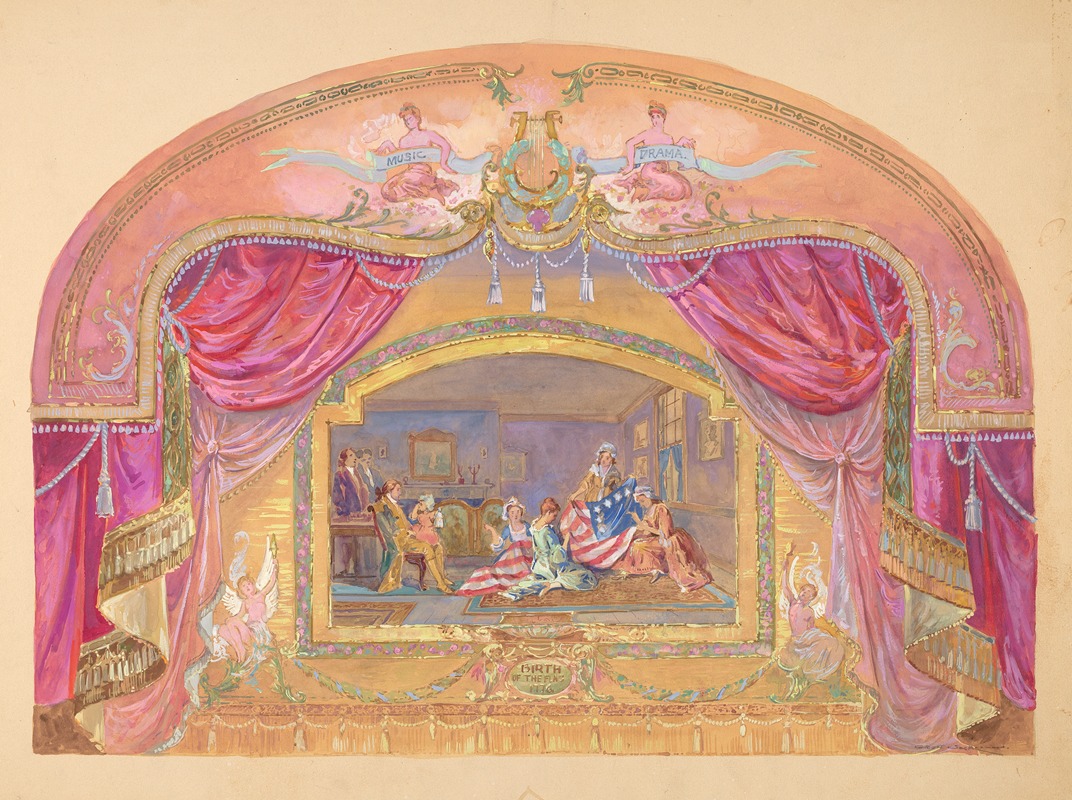Vintage visual
This triptych by Early Netherlandish painter Hieronymus Bosch depicts the Garden of Eden on the left panel transitioning into darker, fantastical imagery culminating in a nightmarish Hellscape https://voltagebets.net/snooker/. It teems with surreal, vivid illustrations of humanity’s pleasures and pain. Scholars see it as a didactic warning against succumbing to the temptations of flesh and vice.
Claude Lorrain painted many harbor scenes throughout his years, although this is generally considered his best. An interesting fact is that this is one of the very first paintings bought by the National Gallery, London, in 1824.
Jean Honore Fragonard captures his young niece engrossed in Rousseau’s sentimental novel Julie, ou la nouvelle Héloïse, its eroticism signaling her budding sexuality. Composed asymmetrically off-kilter amidst Roccoco extravagance, the luminously painted scene epitomizes Fragonard’s hedonistic subjects while upholding moral conservatism. Scholars decode symbols of love and loss – thorny roses, vanished garden. Freshly dressed, she’s too worldly to seem fully innocent, lips parted in unconscious delight, abandoned in reverie’s suspended moment.
Made a few decades after the Mona Lisa, it features a high degree of realism and can be seen at the Mauritshuis Gallery in the Netherlands. This realism is especially evident in the pearl earring with the light reflecting off of it. That said, there are some debates about whether the earring is supposed to be a pearl or polished tin.
Theatrical artwork
The Old Woman Cooking Eggs is a more mundane example of theatricality within artwork, but one that is essential to completing the metaphor. Velazquez’s earlier work focused on depicting the more general aspects of daily peasant life, such as his Water Carrier piece, and The Old Woman Cooking Eggs is no exception to that. However, part of the charm of the piece in differing from Titian’s scene with Christ is that even without the blatant historical references and sheer magnitude of iconographical emotion it still possesses an equally compelling sense of theatrical narrative, regardless of how uninteresting the subject matter may seemingly be. The sharply contrasted figures are organic, and rendered precisely enough to be very believable within their setting. It is possible that this snapshot of daily life was almost more compelling to a casual viewer due to its basic relatability. The commission’s close ties to the working class suggest that this piece very intentionally references its subject matter in a natural, organic form, further increasing its ties to theatrical representation.
Everyone can recognize the look of the theater stage. The lighting is dynamic with sharp contrast, the figures are starkly illuminated, and almost everything is exaggerated in some way, whether in costume or in gesture or both. The theatre carries a wonderful notion of story-telling and imagination with it that creates a framework for imagination. The dark curtains and raised platforms of the stage create the illusion that scenes that play before the viewer are in fact real, and that the audience is merely intruding on a story that would have happened regardless of whether or not they were listening in. This, to me, is the essence of the stage. In a sense, nearly all artistic arrangements of figures within a piece draw from the same principles that make up the ways in which a director would position actors within a scene. Paintings of interactions between people can be created to have an almost cinematic feel, drawing from that same notion that what is happening within the image would happen by itself, regardless of whether or not the viewer was there to see it. These images aren’t static; the events depicted are motion-oriented, and the viewer is almost always left wondering what might happen next within the scene. These works in particular create their own “stages”, where some of the details of the locale are shrouded through tenebrism or infinite space, placing more importance on the figures and their implied actions. This gallery is a collection of Renaissance and Baroque paintings that depict events happening within their own stages, alluding to the idea of being in theater.
Drama unfolds on the stage, and each act reveals the intricacies of storytelling enhanced by the lighting, theatre music, set design, and costume design. The stage is illuminated not just by lights but by the clever use of make-up and sound effects which set the tone and atmosphere.

The Old Woman Cooking Eggs is a more mundane example of theatricality within artwork, but one that is essential to completing the metaphor. Velazquez’s earlier work focused on depicting the more general aspects of daily peasant life, such as his Water Carrier piece, and The Old Woman Cooking Eggs is no exception to that. However, part of the charm of the piece in differing from Titian’s scene with Christ is that even without the blatant historical references and sheer magnitude of iconographical emotion it still possesses an equally compelling sense of theatrical narrative, regardless of how uninteresting the subject matter may seemingly be. The sharply contrasted figures are organic, and rendered precisely enough to be very believable within their setting. It is possible that this snapshot of daily life was almost more compelling to a casual viewer due to its basic relatability. The commission’s close ties to the working class suggest that this piece very intentionally references its subject matter in a natural, organic form, further increasing its ties to theatrical representation.
Everyone can recognize the look of the theater stage. The lighting is dynamic with sharp contrast, the figures are starkly illuminated, and almost everything is exaggerated in some way, whether in costume or in gesture or both. The theatre carries a wonderful notion of story-telling and imagination with it that creates a framework for imagination. The dark curtains and raised platforms of the stage create the illusion that scenes that play before the viewer are in fact real, and that the audience is merely intruding on a story that would have happened regardless of whether or not they were listening in. This, to me, is the essence of the stage. In a sense, nearly all artistic arrangements of figures within a piece draw from the same principles that make up the ways in which a director would position actors within a scene. Paintings of interactions between people can be created to have an almost cinematic feel, drawing from that same notion that what is happening within the image would happen by itself, regardless of whether or not the viewer was there to see it. These images aren’t static; the events depicted are motion-oriented, and the viewer is almost always left wondering what might happen next within the scene. These works in particular create their own “stages”, where some of the details of the locale are shrouded through tenebrism or infinite space, placing more importance on the figures and their implied actions. This gallery is a collection of Renaissance and Baroque paintings that depict events happening within their own stages, alluding to the idea of being in theater.
Drama unfolds on the stage, and each act reveals the intricacies of storytelling enhanced by the lighting, theatre music, set design, and costume design. The stage is illuminated not just by lights but by the clever use of make-up and sound effects which set the tone and atmosphere.
Visual
These Build Tools allow you to build Visual Studio projects from a command-line interface. Supported projects include: ASP.NET, Azure, C++ desktop, ClickOnce, containers, .NET Core, .NET Desktop, Node.js, Office and SharePoint, Python, TypeScript, Unit Tests, UWP, WCF, and Xamarin. Use of this tool requires a valid Visual Studio license, unless you are building open-source dependencies for your project. See the Build Tools license for more details.
Remote Tools for Visual Studio 2022 enables app deployment, remote debugging, remote testing, performance profiling, and unit testing on computers that do not have Visual Studio installed. Use of this tool requires a valid Visual Studio license.
Windows is a popular operating system and it can also be a great cross-platform development environment. This section describes cross-platform features such as the Windows Subsystem for Linux (WSL) and the Windows Terminal.
Film graphic
Bridge Of Spies is an excellent example of how film graphic design is crucial, even if it is in the background. For graphic designers who are looking for inspiration from work in the industry, the visual design in the background of Bridge Of Spies is a fantastic place to draw inspiration from.
A non-scripted graphic refers to a design not written in the script but necessary to complete the set design. These world-building graphics establish a scene’s look and authenticity and are a part of the set construction, set decor, props, locations, picture vehicles, visual effects, playback, or costumes. Here are a few examples:
Concept art: It’s essential to seek concept design approval before finalizing the artwork. It’s good practice to gather visual research and inspirational references and produce various sketches and digital mock-ups for the production designer to give feedback and guidance.
The Tudors shows all graphic designers aspiring to work in the film industry just how important it is to maintain continuity through props and set design. When creating a movie, it is often challenging to film it in chronological order.
“I think one thing you definitely learn as you get older and more experienced is to be patient,” Lima says. “I don’t mean just sit around and wait for things to happen, you know, keep going, but at the same time be patient. Becoming a senior designer from a junior designer doesn’t happen overnight.”
